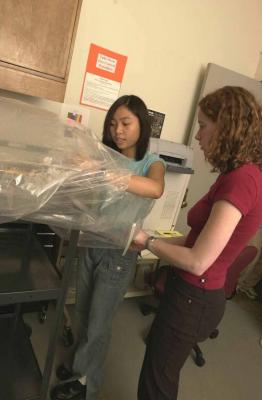Carbon Activation
Carbon Activation

Due to increased energy demands in the United States, research into new forms of energy production is becoming more important. Fusion ignition, the combining of two light nuclei to form a new nucleus, as seen in the sun and atomic bombs, is one possible source of energy. However this energy has not yet been harnessed. Since research into such plasma fusion is a relatively new scientific endeavor, diagnostics need to be constructed to measure reaction products. Carbon activation has been chosen to measure the yield of tertiary neutrons because these high-energy neutrons are related to the efficiency of the fusion reaction. If there is an "energy gain", where more energy is produced than what was used for the reaction to occur, then it would be possible for the world to see an inexhaustible, non-polluting energy source which could replace the diminishing supply of fossil fuels. Graphite disks about three inches in diameter can be placed around the fusion reaction and when bombarded with tertiary neutrons, the 12C(n,2n)11C reaction occurs. This allows us to detect the coincident gamma rays emitted from the 11C decay with a pair of NaI detectors. The number of coincident counts is directly proportional to the number of tertiary neutrons emitted from the fusion reaction.
In order for this process to work effectively, the graphite disks must be properly purified and packaged to minimize any signal produced from contamination. A large vacuum oven and various procedures are used at Geneseo to purify the disks so that they can be useful in fusion efficiency calculations.